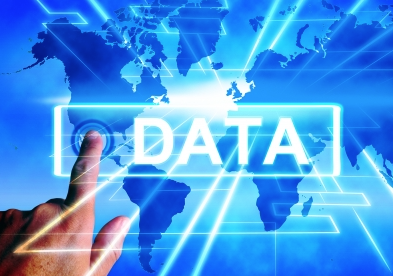
Five Things That Will Happen in 2015 According to OpenText

 The future, as envisioned by Waterloo-based tech titan OpenText.
The future, as envisioned by Waterloo-based tech titan OpenText.
1. Cloud becomes the new normal
“The cloud will be embraced en masse in 2015 because the benefits are huge,” the Canadian company believes. “By digitizing information-intensive processes, costs can be cut by up to 90% and turnaround times improved by several orders of magnitude.”
What they expect to see by year end is a world of hybrid deployments in which some information and applications reside in the cloud and the remainder resides on premise. Data security is a top priority, and a hybrid model allows organizations to balance their workload, meeting all their data sovereignty requirements while leveraging the power of the cloud.
2. Digitization begins the next massive displacement and migration of labour
The employment landscape will be in flux throughout 2015, the early stages of what they expect to be “the next significant labour displacement in history.”
Digital technologies like the Internet of Things, wearable technologies, and mobile and smart devices will force organizations to change the way they engage customers, and develop and deliver new products and services. “Analytics will become ubiquitous, bringing intelligence to every process,” OpenText says. “Robotics, smart machines, and artificial intelligence will infiltrate new parts of the organization and automate positions that are repetitive and transactional in nature. In time, we could see 20 to 30 million jobs migrate or disappear.”
It’s not all doom and gloom, though—rather a shift from transactional jobs to tacit jobs. Tacit jobs require data analysis, judgement, and problem solving skills, as well as the ability to think creatively, communicate effectively, and collaborate in teams, says OpenText. Tacit jobs are predicted to grow two-and-a-half times faster than the transactional segment and CEOs will soon recognize the skills gap around tacit jobs for technology.
3. New startups will mesh digital and physical
The year 2015 will be the year that we see an increasing amount of nimble startups outpacing established enterprises to bring new products to market faster, according to OpenText: “Technological advances like 5G networks, more processing power, advances in storage, and cloud and mobile computing are blurring the boundaries between the physical and the virtual—between people and their technology. Startups will follow in the footsteps of Tado and Dash to leverage this “zero-distance connectivity” and offer compelling new products and services.”
Startups are purists in their approach, organizing their operations around a focused sense of purpose and the promise of tremendous growth. “Agility trumps size, which makes startup culture dynamic, unstable, easy to scale, and eager to embrace (even define) new business models,” the company says. “The startup philosophy entails a rapid product development cycle.”
Over the next few years, we’ll see development cycles evolve from sprints to hyper-connected dashes. Innovation will become faster, more compressed, and approach the spontaneous. To keep pace in a Digital-First World, CIOs and business leaders will have to think like entrepreneurs and adopt startup strategies. Borrowing from the startup ethos will empower them to build adaptive enterprises that can proactively create opportunities for growth.
4. The world realizes the “Internet of things” is just the Internet
Everyone is buzzing about the Internet of Things. The IoT is the extension of the Internet, connecting us to millions of machines, sensors, and objects around us. “The IoT will transform the world as we know it, creating a giant, global network of devices and machines that are connected, communicating, and exchanging data,” believes OpenText. “This market will see 50 billion devices connected by 2020 and a value of $14.4 trillion. Its potential impact is huge.”
And while the IoT is viewed by many as a nebulous, futuristic concept, in reality, it already exists: we wear pedometers, smart watches, and cameras; our pets are microchipped; and we drive cars with built-in sensors. Thanks to the IoT, many of our everyday appliances will soon have the ability to self-monitor and communicate with a network—think Marge’s fully automated “Ultrahouse 3000” in the Simpsons.
“Organizations in both the public and private sector are already using sensor-based technologies to improve inventory control and manage energy through smart grids,” says the company. “As we progress through 2015, more and more people will come to realize the IoT is simply the next evolution of the Internet.”
5. The Chief Data Officer and Chief Digital Officer will become mainstream
To help guide the enterprise on its journey to digital transformation, two C-level roles will find themselves at the executive table: the Chief Data Officer and the Chief Digital Officer. While their roles are unique, both will focus on the strategic importance of information in a digital economy.
The Chief Digital Officer will be the executive advocate for the digital customer and will emerge to oversee both the strategy and the technology for a seamless and satisfying digital customer experience. According to Gartner, 25% of businesses will have a Chief Digital Officer by the end of 2015.
The Chief Data Officer will emerge as the executive advocate for data management—using the exploding volumes of data and analytics to improve decision making and identify new revenue opportunities. Across the organization, every function will want access to data and insights about their operations. The Chief Data Officer will make this possible by optimizing the management of data (integrating, deploying, securing, governing) and mobilizing their organization around an Enterprise Information Management strategy.




